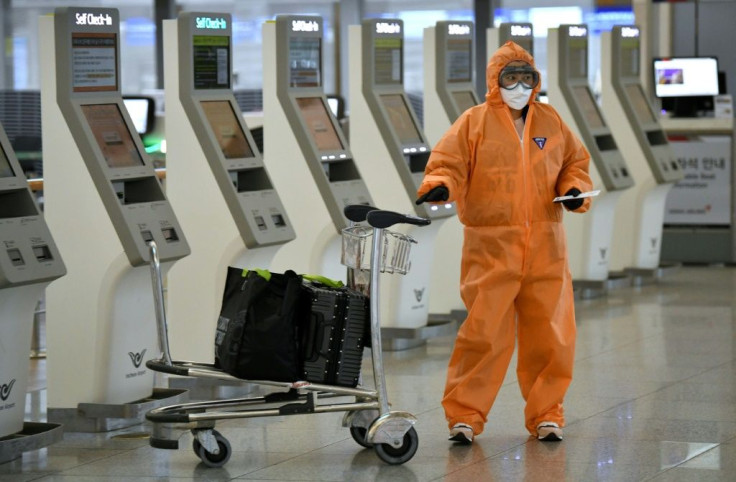South Korean GDP Shrank 1.3% In First Quarter; Second Quarter May Be Worse

KEY POINTS
- The Q1 drop was the biggest quarterly contraction since Q4 of 2008, when GDP plunged by 3.3%.
- The country lost 195,000 jobs in March alone
- Some 70% of South Korea’s economy depends upon trade
The coronavirus pandemic has led the gross domestic product of South Korea to shrink by 1.4% in the first quarter of 2020 on a quarter-over-quarter basis – the biggest quarterly contraction since the fourth quarter of 2008, when GDP plunged by 3.3%.
South Korea’s economy, Asia’s fourth largest, had grown by 1.3% in the fourth quarter of 2019.
On an annualized basis, South Korea's economy grew by 1.3% in the first quarter, the weakest such growth since the third quarter of 2009, when the economy added 0.9%.
During the recent first quarter, the Bank of Korea, or BOK, said, exports tumbled by 2% due primarily to reduced shipments of capital goods, chemicals and automobiles, while exports of semiconductor actually rose.
The country lost 195,000 jobs in March alone, the biggest monthly decline since May 2009, when 240,000 jobs vanished.
During the first quarter, imports fell 4.1% (due to lower imports of crude oil and motor vehicles); while domestic consumption sank by 6.4% -- the sharpest fall since the first quarter of 1998, when it plummeted by 13.8%.
Some 70% of South Korea’s economy depends upon trade.
Finance Minister Hong Nam-ki warned that the economy will probably worsen in the second quarter.
“The economy is likely to contract for at least another quarter as hard times will continue for exports,” Moon Jung-hui, an economist at KB Bank said. “Consumption will improve especially on increased fiscal expenditure, but exports of key items including petrochemical products will suffer.”
Park Yang-su, a director-general at the BOK, said the economy’s future path “depends on the severity of weakness in global demand and domestic demand.”
But Park also noted that consumer sentiment has shown some recent signs of a recovery as the country has relaxed some restrictions on social-distancing guidelines.
For calendar 2020, BOK forecasts growth of 2.1%, while the Asia Development Bank predicts a 1.2% expansion. However, other experts are far more pessimistic.
The International Monetary Fund projects that South Korean GDP will shrink by 1.2% this year, while Standard and Poor’s expects a 1.5% drop. Capital Economics expects the Korean economy will shrink by 6% in the second quarter and contract nearly 3% over the whole year.
But S&P added some hope.
"We believe the current shock is only temporary and that GDP growth will rebound strongly to 5% in 2021, supported by the release of pent-up consumption built during the pandemic and the government's stimulus measures. Investment should also recover as global trade conditions normalize," S&P said in a statement.
Earlier this month, the BOK kept interest rates at an all-time low of 0.75%, citing that it expected "considerably" slower growth.
The South Korean government has also vowed to increase the size of its financial stimulus package by 90 trillion won [$73 billion] to 240 trillion won [$195 billion] to help virus-ravaged companies and protect jobs.
South Korea has been able to reduce coronavirus infections without resorting to extreme lockdowns so many other nations have enacted. The country recorded 10,702 total cases with 238 deaths as of midnight on Wednesday. But self-isolation measures have crippled broad swathes of the economy.
"Widespread lockdowns across the world are weighing heavily on external demand, which will hit Korea's export-focused economy hard," wrote Alex Holmes, Asia economist for Capital Economics.
Indeed, through the first 20 days of April, exports have plunged by almost 27% from a year ago.
This "give[s] a taste of what is to come," Holmes added. “Domestic demand is unlikely to recover much this quarter as people continue to practice social distancing."
© Copyright IBTimes 2025. All rights reserved.





















